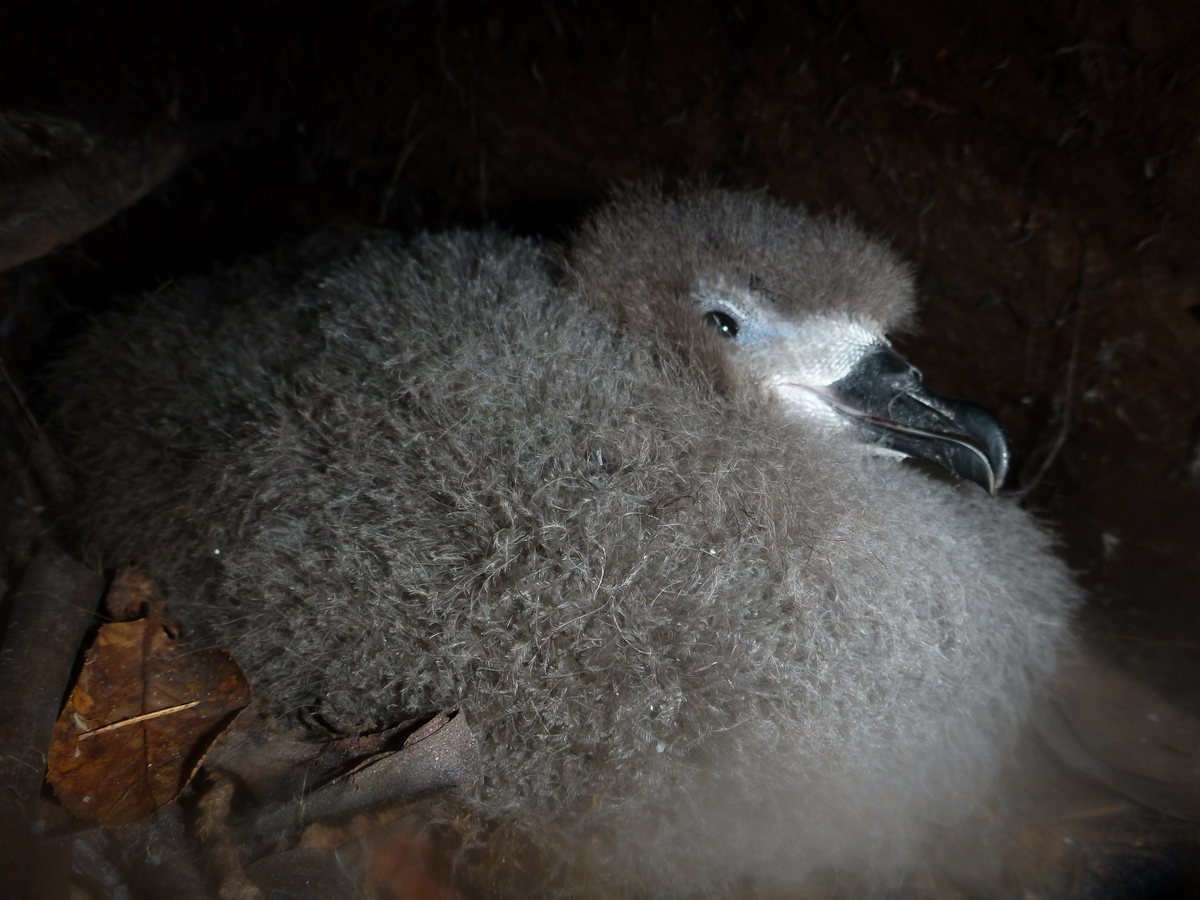
Hawaiian Petrel chick: at risk to feral cats; photograph by Andre Raine
Scott Loss (Department of Natural Resource Ecology and Management, Oklahoma State University, Stillwater, USA) and colleagues have published a review of the global literature on impacts on wildlife by unowned (including feral) domestic cats Felis catus in the Journal of Animal Ecology. “Nearly half of studies evaluated cat impacts in non-continental areas, reflecting human introductions of cats and establishment of feral populations on many oceanic islands worldwide.” They find little or no positive effects of controversial TNR (Trap Neuter Release) programmes on wildlife; a finding relevant to the situation pertaining on some inhabited islands with burrowing seabird populations (such as in Hawaii).
The paper’s abstract follows:
“1. A vast global literature documents that free-roaming domestic cats (Felis catus) have substantial negative effects on wildlife, including through predation, fear, disease, and competition-related impacts that have contributed to numerous wildlife extinctions and population declines worldwide. However, no study has synthesized this literature on cat impacts on wildlife to evaluate its overarching biases and major gaps.
2. To direct future research and conservation related to cat impacts on wildlife, we conducted a global literature review that entailed evaluation and synthesis of patterns and gaps in the literature related to the geographic context, methods, and types of impacts studied.
3. Our systematic literature search compiled 2,245 publications. We extracted information from 332 of these meeting inclusion criteria designed to ensure the relevance of studies analyzed.
4. This synthesis of research on cat impacts on wildlife highlights a focus on oceanic slands, Australia, Europe, and North America, and on rural areas, predation, impacts of unowned cats, and impacts at population and species levels. Key research advances needed to better understand and manage cat impacts include more studies in underrepresented, highly biodiverse regions (Africa, Asia, South America), on cat impacts other than predation, and on methods designed to reduce impacts on wildlife.
5. The identified areas of needed research into cat impacts on wildlife will be critical to further clarifying the role of cats in global wildlife declines and to implementing science driven policy and management that benefit conservation efforts.”
With thanks to Janine Dunlop, Niven Librarian, FitzPatrick Institute, University of Cape Town.
Reference:
Loss, S.R., C., Boughton, B., Cady, S.M., Londe, D.W., McKinney, C., O’Connell, T.J., Riggs, G.J. & Robertson, E.P. 2022. Review and synthesis of the global literature on domestic cat impacts on wildlife. Journal of Animal EcologyJournal of Animal Ecology doi.org/10.1111/1365-2656.13745.
John Cooper, ACAP Information Officer, 26 May 2022

 English
English  Français
Français  Español
Español